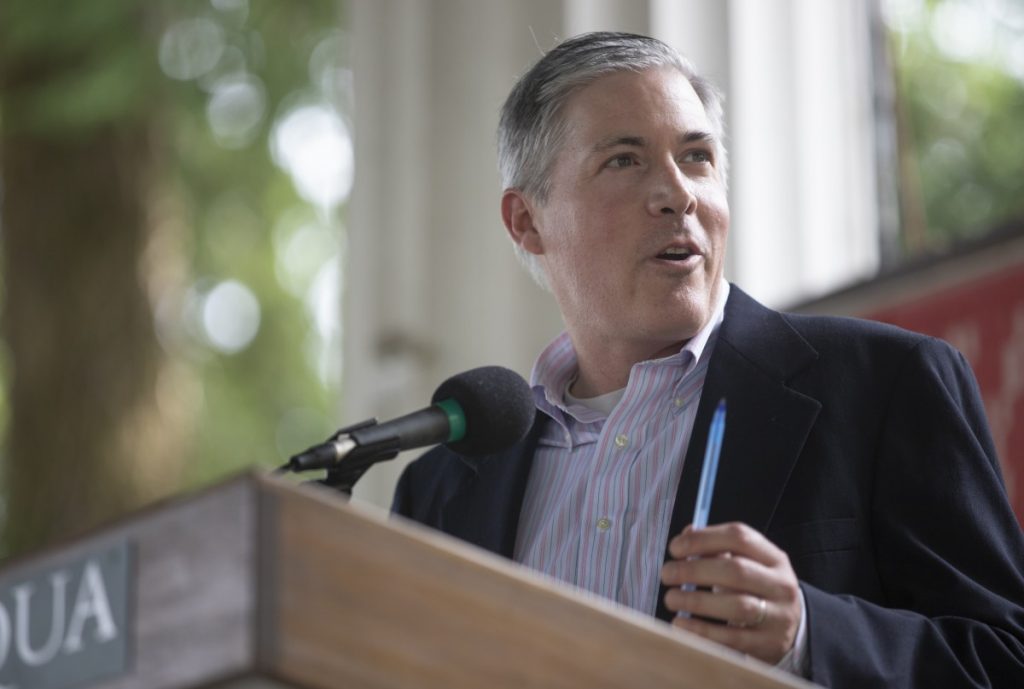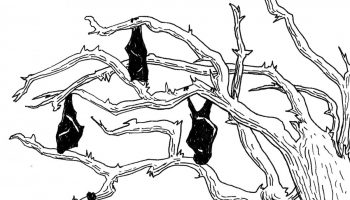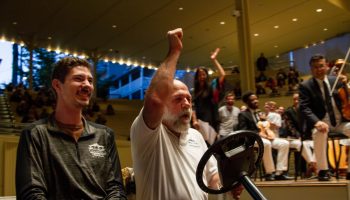
John Halpin became interested in progressivism based on his experience with political activism. He began knocking on doors in 1988 for Republican candidate George H. W. Bush, proceeded to campaign for Democrat Bill Clinton in the following election, and in 2016 was an avid supporter for Democratic socialist candidate Bernie Sanders. Now, he is a senior fellow at the Center for American Progress and the creator and co-director of the Progressive Studies Program, spreading his belief in the need for ongoing change in the United States.
At 2 p.m. on Thursday, July 5, in the Hall of Philosophy, Halpin gave his lecture, “Faith and Politics in the Progressive Era,” as part of Week Two’s interfaith theme, “Religion and American Identity.” Halpin’s lecture was moderated by Interfaith Youth Core Founder Eboo Patel. Patel is an advocate for religious tolerance and wrote a set of essays on religious pluralism that will be published in the fall by Princeton University Press.
The time between 1890 through 1920 is known as the Progressive Era in American history, an era of intense social and political reform aimed at making progress toward a better society. During this era, there were two main strands of progressive thought concerning the relationship between faith and politics — one secular and one emerging directly from religious values.
Associated most often with the “right,” or conservatism, are the progressives whose work emerged from religious values. The ideals of faith-based progressives originated during the Social Gospel Movement, a religious movement where ministers, especially ones belonging to the Protestant branch of Christianity, began to tie acts of good and salvation together. They argued that people must emulate the life of Jesus Christ, which is why the motto “What would Jesus do?” was created.
“This wasn’t a marketing slogan, but a basis for a lot of progressive faith-based activism,” Halpin said. “It meant to try to live with radical humility and to care about others.”
In carrying out this motto, faith-based progressives were striving to create the kingdom of God on Earth.
“This is what drove a lot of them,” Halpin said. “They really wanted to form a social harmony that was more aligned with their understanding of the Christian faith.”
American Protestant ministers and theologians during the 19th century, such as Walter Rauschenbusch, adopted this belief. Rauschenbusch published a book in 1907 called Christianity and the Social Crisis, which served as a statement of faith-based progressivism. Halpin said it “offered a compelling argument for the social application of the Gospels.”
The book had three components. The first was the idea that Christianity’s central purpose was to transform human society into the kingdom of God by “regenerating all human relations and reconstitute them in accordance with the will of God.”
“The idea was to change the situation on earth to fit more with concepts of what a fair, just and humane heaven would be like,” Halpin said.
This book also focused on Christians’ desire to solve what was called the “present crisis,” one of poverty and deprivation during the Industrial Revolution.
“It was not enough for these Christians to sit back and think about the internal aspects of their faith,” Halpin said. “They were to go out and try to understand, address and fight very social problems.”
Lastly, Rauschenbusch wrote about the “fruits of a capitalist economy,” which he hoped to make more humane.
“They want industry and capitalism, which can produce wealth, but they want it distributed in a more equitable way, and they wanted it to be for the benefit of humanity,” Halpin said.
The same concept of social activism arose among Catholics with the release of Pope Leo XIII’s 1891 encyclical, “Rerum Novarum.”
“This encyclical was trying to find some humane path between revolutionary collectivism and laissez- faire,” Halpin said. “The Church, through social teachings, became committed to the rights of workers, the unionization, some kind of state intervention that would provide basic needs, without going to one extreme of revolutionary socialism or doing nothing.”
However, Halpin said it is important to note that although the faith-based ideas of “the right” have served as prescient voices throughout history, their side of the movement had its faults as well.
“Religion was used to defend a lot of bad things, particularly in terms of racial discrimination,” he said. “It is not that everything done by religious progressives was always good, but I think for the most part, they tried to apply the best aspects of their faith to the problems of the day.”
On the other hand, secular progressive thought associated with “the left,” or liberalism, was insistent upon keeping religion out of politics and politics out of religion. Prominent American liberals, such as Thomas Jefferson, championed freedom of conscience, religious tolerance and strict separation of church and state.
When examining “the left” in present day, there is still the same focus on secular, multicultural politics, technocratic governance and a commitment to social inclusion.
Halpin recognizes why “the left” thinks it is unusual to include faith in contemporary issues, but believes “the left” has “a missing moral component” that is holding it back from continuous progressive change.
“What we desperately need in (‘the left’) is to fight for the common good and challenge extrem





